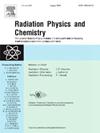通过灵敏度校正程序测量的 OSL 剂量反应曲线读取的陷阱填充参数的可靠性
IF 2.8
3区 物理与天体物理
Q3 CHEMISTRY, PHYSICAL
引用次数: 0
摘要
早期的受激发光研究表明,即使是由一个阱和一个重组中心组成的系统,剂量反应曲线(DRC)也与阱中电子浓度对晶体辐照剂量的依赖曲线不一致。然而,对于由更复杂的陷阱和重组中心系统产生的光激发发光(OSL)信号,通常可以观察到 DRC 可以用简单的单饱和指数(SSE)或双饱和指数(DSE)函数来描述。通过模拟,我们发现虽然通常可以达到很好的拟合效果,但所获得的参数仅在某些情况下能正确描述单个捕获器的占用率与剂量之间的关系。为 DRC 构建程序而进行的模拟包括一个步骤,以校正灵敏度的可能变化。测试了一个在 OSL 过程中活跃的两个陷波器和两个重组中心的模型。建模结果表明,使用 SSE 函数进行 DRC 分析的结果不仅在很大程度上取决于捕获器捕获概率系数的关系,还取决于捕获器的浓度和重组中心的浓度。DRC 的形状以及拟合参数也会随着 DRC 测量协议中使用的退火温度而改变。本文章由计算机程序翻译,如有差异,请以英文原文为准。
Reliability of trap-filling parameters read from OSL dose-response curves measured by procedures with sensitivity correction
As is known from the early stimulated luminescence studies, dose-response curves (DRCs) are not consistent with the curves of the dependence of the electron concentration in the traps on the irradiation dose delivered to a crystal, even for a system consisting of one trap and one recombination centre. However, for the optically stimulated luminescence (OSL) signal originating from more complex trap and recombination centre systems, it is often observed that the DRC can be described by a simple single saturating exponential (SSE) or a double saturating exponential (DSE) function. Using simulations, we show that although good fit compliance can often be achieved, the parameters obtained only in some cases correctly describe the relationship between the occupancy of individual traps and the dose. Simulations performed for the DRC construction procedure included a step allowing for the correction of possible changes in sensitivity. A model of two traps active in the OSL process and two recombination centres was tested. The modelling shows that the results of the DRC analysis using SSE functions strongly depend not only on the relationship of the trapping probability coefficients of traps but also on their concentrations and the concentrations of recombination centres. The shape of the DRC, and therefore the fitting parameters, also change with the annealing temperature used in the DRC measurement protocol.
求助全文
通过发布文献求助,成功后即可免费获取论文全文。
去求助
来源期刊

Radiation Physics and Chemistry
化学-核科学技术
CiteScore
5.60
自引率
17.20%
发文量
574
审稿时长
12 weeks
期刊介绍:
Radiation Physics and Chemistry is a multidisciplinary journal that provides a medium for publication of substantial and original papers, reviews, and short communications which focus on research and developments involving ionizing radiation in radiation physics, radiation chemistry and radiation processing.
The journal aims to publish papers with significance to an international audience, containing substantial novelty and scientific impact. The Editors reserve the rights to reject, with or without external review, papers that do not meet these criteria. This could include papers that are very similar to previous publications, only with changed target substrates, employed materials, analyzed sites and experimental methods, report results without presenting new insights and/or hypothesis testing, or do not focus on the radiation effects.
 求助内容:
求助内容: 应助结果提醒方式:
应助结果提醒方式:


